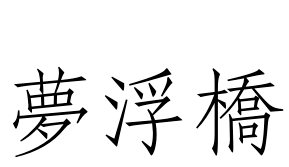During the two months four articles appeared in the blog. Three of them dealt with the Japanese language in the category of history and one was a review of a new translation, a detective story.

The first article gives an overall description of the Japanese language. It describes the features of the spoken language including the various levels of politeness. It also describes the writing system, which is by far the most challenging part of the language, with its four different scripts, kanji, hiragana, katakana and rōmaji. The article throws light on the historical development which has caused the writing system to be what it is today, when school children have to learn to read and write 2136 kanji characters in 9 years, with more than one way of reading for each of them.
Read more: https://uniensilta.com/2021/04/18/japanin-kieli-ja-kirjoitusjarjestelma/
The second article is about the transliteration of Japanese in Roman letters. The most common system used is so-called Hepburn-system, which is based on English sounds, but is commonly used also in Finnish, with certain adaptations. When going to a supermarket, do you buy tofu, tōfu or toofu? The meaning of the first one has nothing to do with bean curd, the everyday Japanese delicacy. The other two are in the right track. The second one is in Hepburn-system with macron on the vowel to indicate that it is long and the third one just uses two vowels to indicate the same thing. Especially in Finnish the last one works well, but all three can be seen.
Read more: https://uniensilta.com/2021/04/28/japanin-siirtokirjoituksesta/
The subject of the third article is about Japanese names. Sometimes there is confusion of the order of names, personal name and family name. Quite often a Western reader is not able to recognize which one is which. Traditionally in Asia and in Japan the family name comes first. In Western language context, however, it has become a custom to use the western order (personal name first). Consequently, I also use the western order in the blog texts, but in the bibliography the names of the authors are of course listed in alphabetical order based on family names, except those who are mostly known by their pen names. They are listed both by the pen name and the family name.
Read more: https://uniensilta.com/2021/05/25/japanilaisista-nimista/

The subject of the fourth article:
Keigo Higashino: Myrkyllinen liitto. Tr. by Raisa Porrasmaa. Japanese: Seijo no kyûsai (聖女の救済). English: Salvation of a Saint.
Punainen silakka is a publishing company devoted to publishing Japanese detective stories and Higashino’s novel is its second publication, the first being by the same author too. Again the reader is drawn into a mystery that seems insolvable. Rather than horror and blood, Higashino offers his readers psychological excitement and intellectual challenge, thus appealing to a large audience. The story is nicely seasoned with Japanese spices.
Read more: https://uniensilta.com/2021/05/06/myrkyllinen-liitto-onko-taydellista-rikosta-olemassa/

